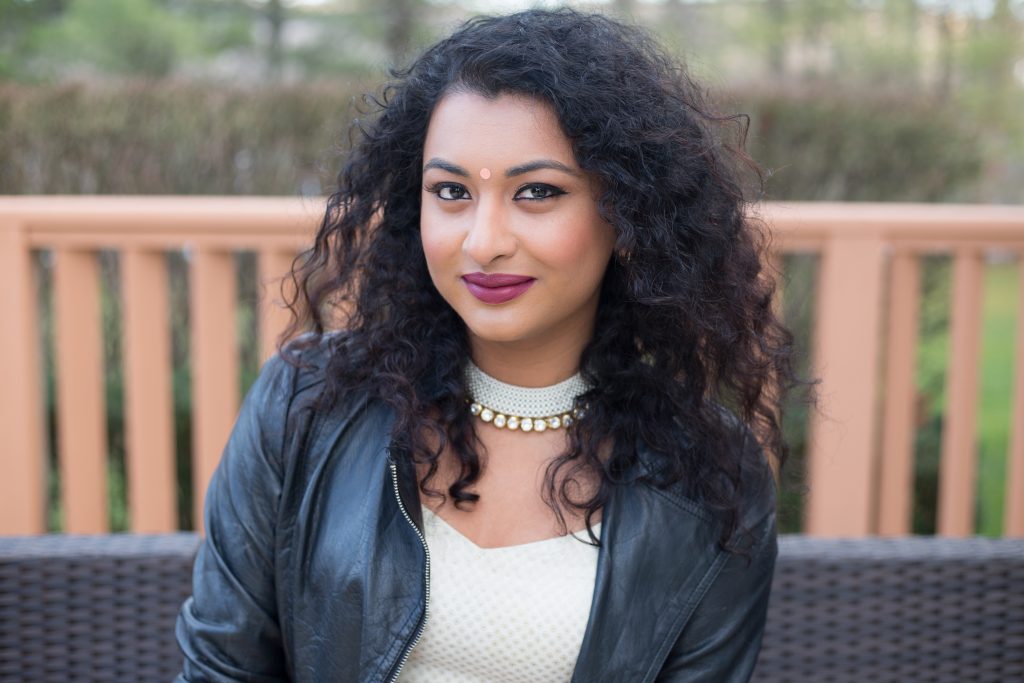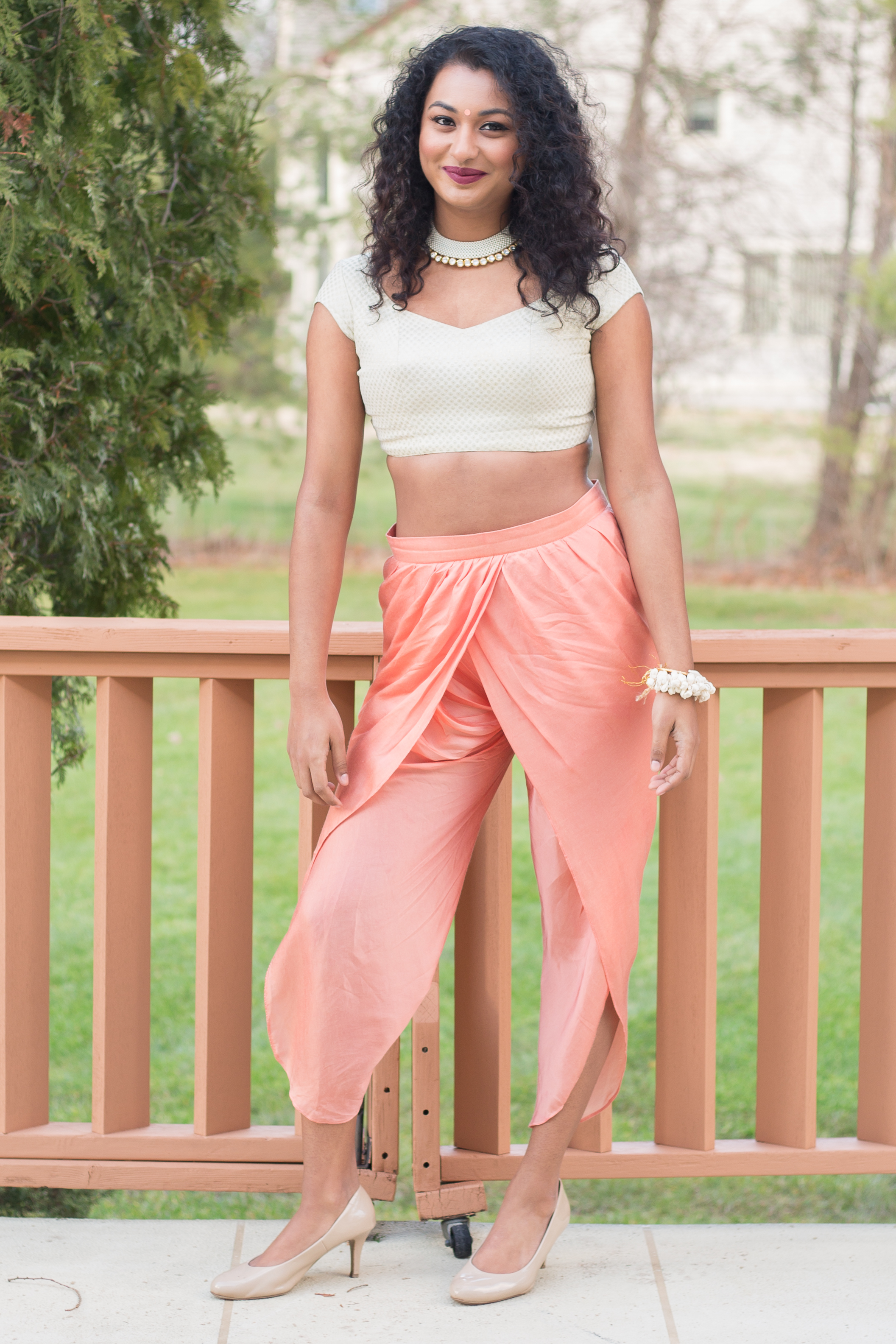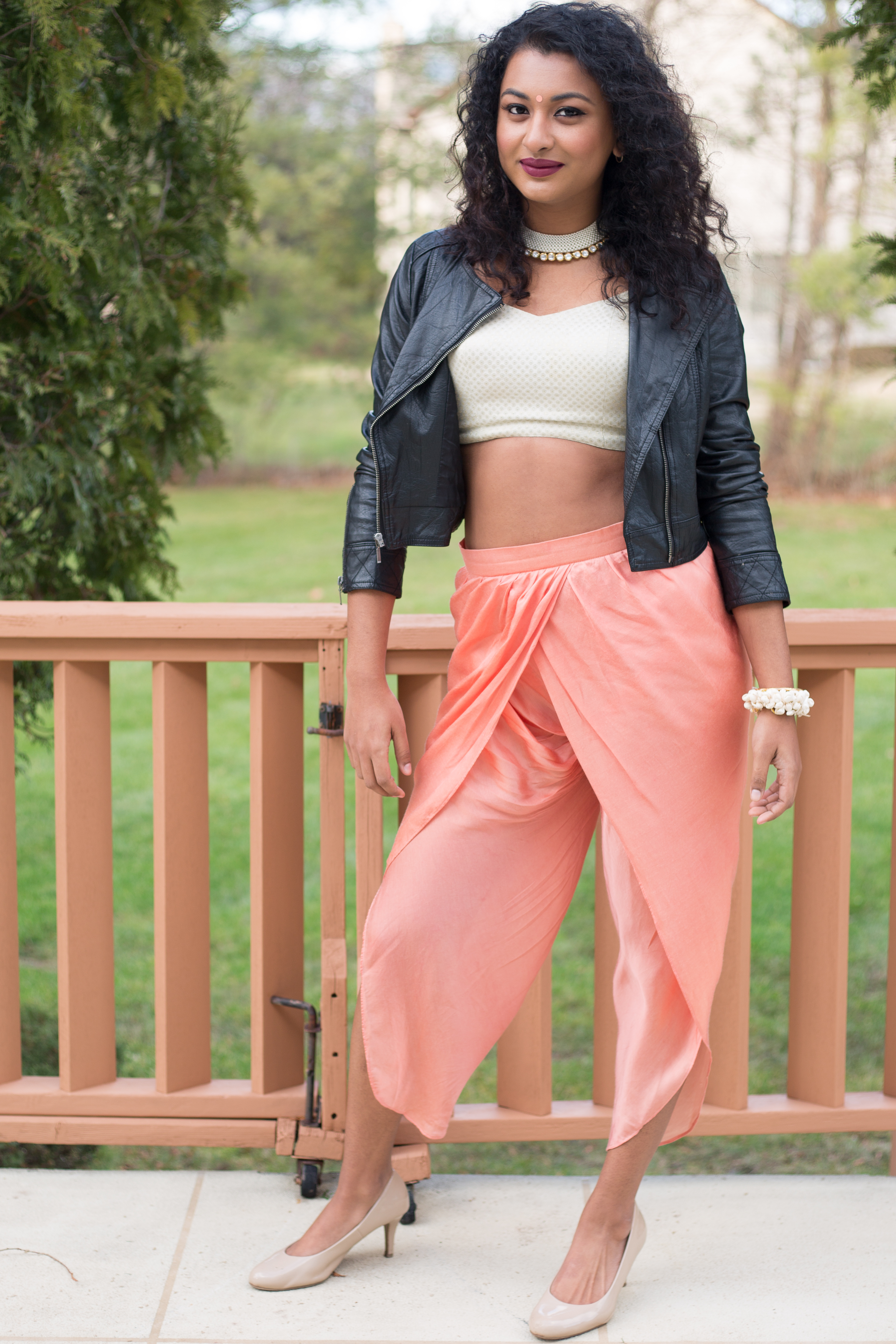
The following post is brought to you by our sponsor, IndiaBoulevard.com— a marketplace for Indian fashion. These photo series are a part of our ‘East Meets West’ photo shoot, curated in efforts to showcase how we merge our eastern and western flairs to shape our identities.
I’ve never considered myself ‘stylish’— we have tons of women like Sonam Kapoor and Masaba Gupta for that. But when I’m getting ready, I’m always mindful of what works and what doesn’t. For me, ‘style’ has always been what makes someone stand out from the crowd. When you look at someone and think, “Only ____ could pull that off,” that’s style; equating someone’s own unique look with their personality, that’s style.
I’ve always maintained that style is less about making a statement and more about being true to yourself. Being a TV anchor, I’ve learned to be a bit more self-aware when it comes to my fashion choices. But I’ve also understood that it’s even more important to not lose yourself in that process.
[Read Related: Style Diaries: A Fine Balance Between the Indian and the New Yorker]
I’m Indian but I identify myself, more specifically, as a South Indian (Malayali). I’ve always believed that Indian fashion is the most beautiful in the world but it’s more than just bangles and saris. For me, every part of India reminds me of something special.
When I think of Bengalis I think large red bindis. Tamil Nadu is definitely synonymous to the nose rings; Gujarat simply turns my attention to its mirrored sequins and intricate patterns. And, of course, when I think of Kerala (and a South Indian), only one thing comes to mind, jasmines!
 [Jessica is sporting this classic dhoti, staple to every South Indian, courtesy of IndiaBoulevard.]
[Jessica is sporting this classic dhoti, staple to every South Indian, courtesy of IndiaBoulevard.]
India is known for its jasmines but I think we, as South Indians, incorporate them much more into our day-to-day lives. That’s what compelled me to want to use them in this look for IndiaBoulevard. Jasmines are not only known for their amazingly refreshing smell but are used in weddings, decor, fashion etc.—they’re so versatile. I’ve seen brides adorned in jasmines on their wedding day and school kids wearing them in their hair. So whenever I think of these flowers, it never fails to remind me of home.
[Read Related: How to Exude Culture, Feminism, and a Unique Sense of Style]
This look was an attempt to fuse what I love most about the east and west. Dhotis (mundu) are a huge staple of South Indian attire. For a long time, dhotis were predominately worn by men but it has finally become a part of female fashion as well. I love how elegant a woman looks in a properly draped dhoti because it can turn even the most boring outfit into something really classy.

The twist in this look is definitely the leather jacket. The jacket adds a lot of dimension to an otherwise completely desi look. Many might find it a strange pair, but I felt the black was a nice contrast to the soft pink dhoti pants. And of course, the jewelry was just the icing on top. South Indians love BIG jewelry with lots of bling. The completed look may not be the most stylish, but it has my name written all over it!
Dhoti Courtesy of India Boulevard Photographer: Pooja Dhar of PR Photography Creative Director: Amy Devan| Makeup and Hair: Jasmin Rahman | Jewelry: Reemat Designs Backdrop: Ashni Mehta’s Home
 IndiaBoulevard is a curated marketplace for designer fashion. We connect customers from all over the world with a variety of designers, to make custom-made outfits. We believe that every person is unique and has a personal style. Our team combines your style inspirations with your spending preferences to customize the perfect design for you. Our mission is to make designer wear accessible to everyone everywhere.
IndiaBoulevard is a curated marketplace for designer fashion. We connect customers from all over the world with a variety of designers, to make custom-made outfits. We believe that every person is unique and has a personal style. Our team combines your style inspirations with your spending preferences to customize the perfect design for you. Our mission is to make designer wear accessible to everyone everywhere.
 Jessica Thomas is a field reporter, and the head of online content, at AVS Television Network. Born and raised in New Jersey, Jessica grew up with a love for cinema. In her downtime, she enjoys writing, reading a good book, and emceeing events. Her love of the arts and passion for the media have both turned into her profession. Post graduating from Rutgers University with a B.A. in journalism, she has worked in various radio, television, and print mediums. Her friends have deemed her ‘Miss Bollywood’ because of her extensive knowledge of Indian cinema. You’re almost certain to find her at the opening night of any Bollywood flick.
Jessica Thomas is a field reporter, and the head of online content, at AVS Television Network. Born and raised in New Jersey, Jessica grew up with a love for cinema. In her downtime, she enjoys writing, reading a good book, and emceeing events. Her love of the arts and passion for the media have both turned into her profession. Post graduating from Rutgers University with a B.A. in journalism, she has worked in various radio, television, and print mediums. Her friends have deemed her ‘Miss Bollywood’ because of her extensive knowledge of Indian cinema. You’re almost certain to find her at the opening night of any Bollywood flick.





